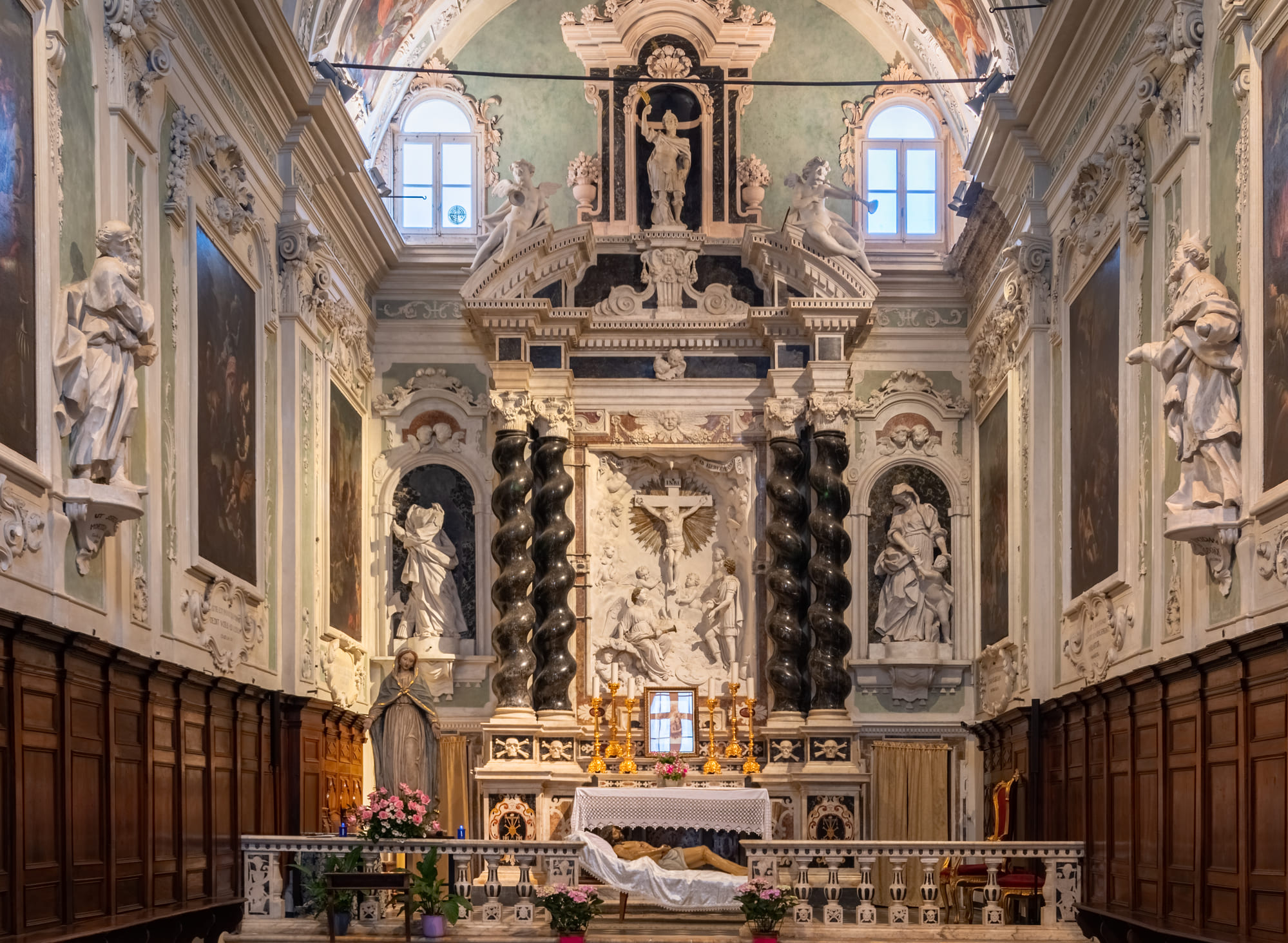Sacred and
tradition
A confraternity at the heart of history.
Set among the picturesque houses of the historic city center, which with their walls and arches seem to protect it, this oratory, named Oratorio di San Secondo, but known as Oratorio dei Neri, is a baroque gem on the main road, Via Garibaldi, that surprises us with its pure beauty.
Historical Background
The building, headquarters of Compagnia della Misericordia (Confraternity), was built in 1650 on the area of an ancient building, donated by will of the noble Antonio Porro.
Over the years, the sober beauty of the oratory has been enriched by works of art, such as the eight large canvases on the two side walls, painted by the Genoese painter Serra. The inlaid black-marble altar dates back to 1678 and is a valuable work by Master
Giacinto Aycardo. Inside the niche, it is possible to admire the statue of San Secondo.
The Entrance
Accessing via the Turbia stone portal, sculpted by Master Benedetto Bruno of Monaco in 1670, we are welcomed by a simple rectangular room. The frescoes, framed by stucco motifs, are the work of Maurizio Carrega and date back to the two-year period 1784-1786.
The Dead Christ
The black and white checkered floor leads to an austere environment, without benches or chairs, from which the “Cristo Morto” (Dead Christ) artwork emerges: A valuable and articulated statue from the 1700s, with touching realism, designed so as to be able to represent, during Good Friday, the descent from the cross.
The Altar
The most modern work we observe is the white stucco group in the niche of the main altar, by sculptor Paolo Biamonti. It is assumed that this space was originally occupied by a now disappeared painting, commissioned by the Porro family in 1600.
Information
Via Garibaldi, 19 – 18039 Ventimiglia (IM)
Fun Fact
The name Oratorio dei Neri (literally, oratory of the blaks) derives from the color of the cape worn by the brothers of the confraternity (Compagnia della Misericordia).

